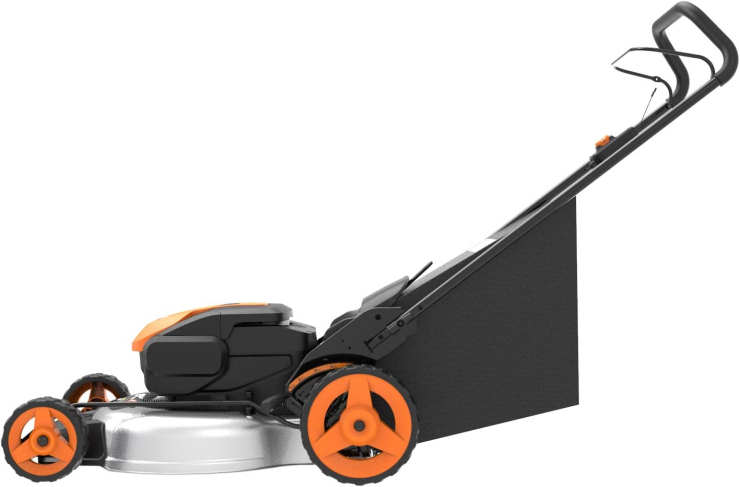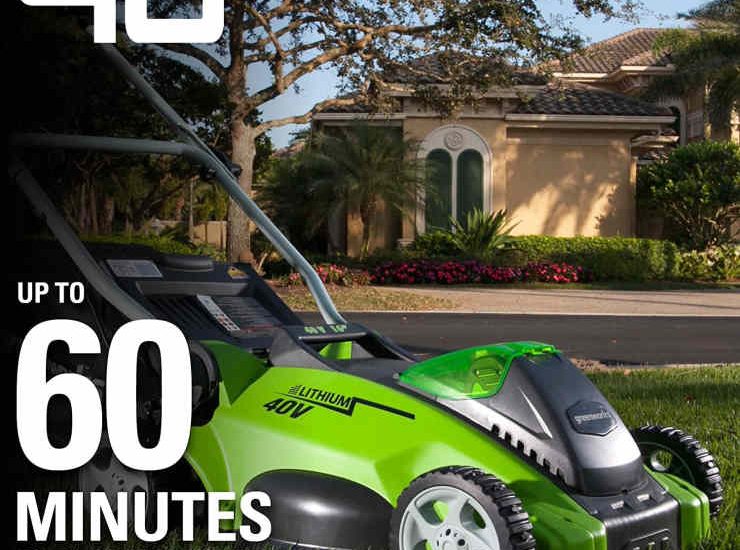How to Troubleshoot Grass Not Going into Lawn Mower Bag
Is it a common issue that grass does not enter the bag of your lawn mower? If so, you will need to know how to fix the problem because it makes the experience of mowing uncomfortable.
To troubleshoot grass not going into lawn mower bag problem, you mainly need to ensure the bag is clean, the mower deck is clean, the blade is sharp and correctly positioned, and the engine operates effectively.
This article will explore why a lawn mower cannot bag grass effectively. Then, we will find straightforward techniques to troubleshoot grass not going into lawn mower bag.
What Causes Grass Not Going into Lawn Mower Bag?
It is critical to identify the root cause of the problem before attempting any troubleshooting actions.
Grass growth under the mower deck, clogged blower tubes, or a sluggish engine speed all contribute to a lack of air circulation. If the blades are installed incorrectly, your mower will not be creating an effective vacuum under the mower deck and grass will not go into the bag.
When using a belt-style grass collecting system, if the belts, fan, or blower housing are worn or broken your mower may not bag grass.
Things You Will Need to Troubleshoot:
The tools that you will need to troubleshoot grass not going into lawn mower bag:
- Pressure Washer
- Scraper
- Blade Removal Tool
- Socket
- Breaker Bar
- Hand Gloves for safety
Particularly maintain the pressure washer at the appropriate pressure and increase the pressure slowly. Also, the socket size may vary in different models.
How to Troubleshoot Grass Not Going into Lawn Mower Bag?
There are so many troubleshooting ways for this problem. But all of them are not efficient.
For your convenience, we have included a step-by-step guide explaining everything you need to know. Using this guide, you may expect faultless outcomes in every respect.
Step-1: Pull off the Bag
The bag is attached to the back of the mower. Firstly, you need to lift the rear shield of the mower.
Then remove the bag and frame, and unclip the bag retainers if necessary. Finally, pull off the bag from the frame carefully.
Step-2: Clean the Bag
The next thing you need to check is that the bag has proper airflow. If it is packed full of dirt and rubbish, wash it out with a pressure washer and make sure that the bag is free-flowing.
Note: Sometimes, while maintenance, massive holes are created in the bag, which results in hindering the airflow and causes unwell bagging.
Step-3: Pull off the Mower Deck
Next, you will need to pull off the mower deck. Drop your mowing deck down to the ground to its lowest position to pull it off.
Then you need to pull off two clips and a belt on both sides of the mower. The clips are placed right between the rear tire and the fender and underneath your footrest. The belts are also situated on both sides of a mower around a belt guide.
There is an arm that holds the front of the deck up. The number of arms may vary according to the model. Next, pull the arm clip as you pull off the side clips. Finally, a cable must be pulled off, and a spring arm needs to unhook.
And now the deck is not connected to your mower anymore. So now you can grab the mower and slide it onto the ground. ?
Step-4: Clean the Mower Deck
Check the disconnected mower deck. Any debris on the deck can cause problems like unwell grass bagging.
If there is an accumulation of grass on the deck, the grass might not go all the way to the bag after cutting. Therefore, clean the deck carefully with a scraper or pressure washer. Crash your washer if you need to get it all cleaned out.
Step-5: Check the Mower Blade
Bagging problems are often the result of a faulty or dull blade. Bagging performance is decreased by blunt, wrong angled and damaged blades.
Remove the blade using the blade removal tool, a socket incorporated with a breaker bar. Check the mower blade properly and sharpen the blade if it is blunt. Correctly angled the blade if it is not and even replaced it if necessary.
Step-6: Check the Engine Performance
The engine performance is also needed to check. The under-powered or malfunctioning engine may cause issues in bagging grass. For optimal performance, your engine should be operating between 3200 to 3650 rpm.
You may assess the performance of a lawn mower engine by examining a variety of factors. These include high horsepower, excessive noise, low gas mileage, strange odors, engine starting difficulties, and so on.
If the engine is underpowered or not functioning well, repair it or replace it if necessary.
Step-7: Reinstall the Mower Deck and the Bag
Once you have removed it and done all the troubleshooting steps, you are ready to reinstall the deck and the bag.
To reinstall the mower deck, pull on the clips, belts, arms and spring hook in the opposite order you pull them off.
To reinstall the bag, slide the frame into it and then clip the bag retainers onto the frame. Finally, lift up the rear shield and position the frame into place.
While reinstalling the items, tighten everything correctly to ensure good performance. Eventually, you have fixed the lawn mower that is ready for mowing.
Note: Be careful while reinstalling the bag to the mower back that you should seal it nice and fine.
The troubleshooting method, including washing the bag and the deck properly, can take about 20 to 30 minutes.
Frequently Asked Questions
Final Verdict
After reading the article, it should be clear how to troubleshoot grass not going into lawn mower bag. However difficult it may seem, resolving the bagging grass problem may be quickly accomplished if the steps outlined above are followed. Above all, routine lawn mower maintenance is the key to avoiding such problems and increasing the longevity of your lawn mower.
Related Posts:


